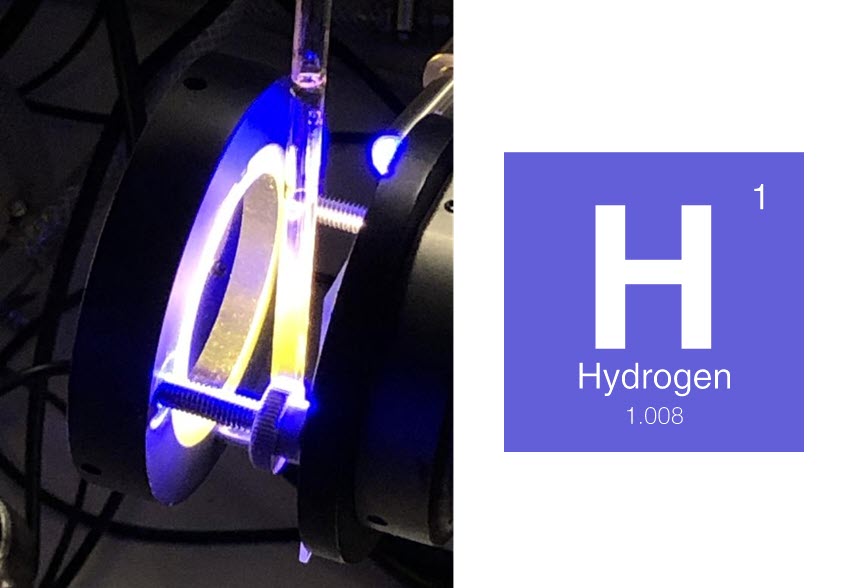
It sounds simple, and nature shows us how: Green plants store solar energy by splitting water into hydrogen and oxygen using light and chloroplasts.
Research is interested in obtaining hydrogen gas (H2) in a similar way, because when produced “green” it is considered to be the protagonist of a sustainable energy and raw materials economy.
Jacob Schneidewind from the Leibniz Institute for Catalysis in Rostock showed one way to get there with his dissertation. He discovered the mechanism of a new type of water splitting with which photolysis can be made inexpensive. The report was published in the specialist magazine ENERGY & ENVIRONMENTAL SCIENCE.
Green hydrogen can be obtained in different ways. Electrolysis is currently used technically by means of a catalytic converter and electricity from the wind or the sun. Of course, photolysis is more elegant and possibly more cost-effective, in which sunlight directly splits water with the help of a catalyst – without going through electricity from wind or solar systems. Chemistry is currently intensively exploring this photocatalytic path under the heading of “artificial photosynthesis”.
What it takes: water, light source, catalyst
12 years ago, a team from the Weizmann Institute, Israel, reported in SCIENCE magazine about a chemical reaction in which a new type of catalyst split water with the help of light. “But nobody understood how it happened,” says Dr. Jacob Schneidewind. “The only thing that was clear was that no one had seen or described this type of water splitting. It is also completely different from natural photosynthesis. ”
There was something fundamentally new to learn about water splitting. And to explore a new way of using these processes technically. Jacob Schneidewind studied for three years in his doctorate at LIKAT the original reaction of his Israeli colleagues using water, a light source and the ruthenium catalyst. The aim was to clarify the processes at the molecular level and to simulate the processes on the computer.
Four hurdles for photons
Brief reminiscence of the biology lessons in secondary school: During photolysis in green plants, two H2O molecules each produce an oxygen molecule (O2) as well as exactly four protons of hydrogen (H +) and four electrons (e-). Jacob Schneidewind explains: “The energy for the release of the four electrons comes from four absorbed light particles, the photons. In order to gain enough photons, nature uses several absorbing centers. ”
One could imagine the reaction like an energetic hurdle, says Jacob Schneidewind. “There are four hurdles to overcome before the goal, ie the splitting of the water. If even one of them is torn, the photolysis fails – at least for this group of molecules. ”So much for the process in nature.
Original leaves questions unanswered
In the laboratory at the Weizmann Institute, however, the photolysis did not take place at several absorbing centers, but only at a single point. “That seemed strange,” said, Jacob Schneidewind. “It is extremely unlikely that a catalytic center would absorb four photons on its own.” Nor would the energy of a single photon be sufficient to overcome all four hurdles. There was no meaningful explanation for this.
As a doctoral student, Jacob Schneidewind familiarized himself with quantum chemistry and the kinetics of chemical reactions, with the help of which he was able to model reactions on the computer. In the laboratory, he recreated the Israeli experiment with changing light sources, from short-wave, high-energy blue light to low-energy red light. Colleagues at the University of Rostock carried out the analyzes using high-speed spectroscopy.
The solution: two hurdles are sufficient
“We were all surprised to see what was happening in the system,” says Jacob Schneidewind. In fact, the photocatalytic route to hydrogen manages with two photons instead of the usual four. And both the absorption of the photons and the actual fission reaction take place at a single center, which consists of a pair of ruthenium atoms. “When the first photon has cleared its hurdle, a new connection is created that absorbs the second photon. And this even requires less energy for the second hurdle than was necessary for the first hurdle. ”This means that a wider range of light can be used, which can significantly improve efficiency.
Structurally everything seems cleared up. What follows from this technically? “For example, you could fill transparent plastic tubes with a suspension or solution of water and a catalyst and expose a large area to the sun,” says Dr. Cutting wind. With the right catalyst, this approach would be three to four times cheaper than the combination of solar cells and electrolyzer. Jacob Schneidewind plans to develop a suitable catalyst for this from autumn with his own junior research group at RWTH Aachen, where he switched to after completing his doctorate.
Sustainable energy concepts are based on the assumption that in future green hydrogen will be produced in sunny regions and imported into Europe. The knowledge from LIKAT will help to develop appropriate technologies.
Original publication: DOI: 10.1039 / d1ee01053k
Read the most up to date Fuel Cell and Hydrogen Industry news at FuelCellsWorks




